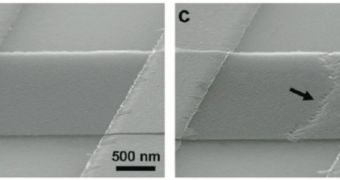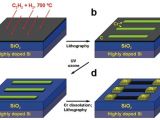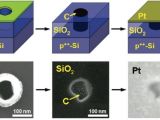Experts from the Rice University have recently announced new progress in nanotechnology research. They found a new way of using graphite, a basic carbon compound that makes up the inside of pencils, as a reprogrammable gate array. This could bring about a revolution in integrated-circuit logic design, which could, in turn, further the research for very dense and stable, nonvolatile memories, for a wide array of digital devices, from mobile phones to computers.
The investigation was conducted in the lab of the RU Chao Professor of Chemistry James Tour. The expert is also a professor of mechanical engineering and materials science, and of computer science at the university. He collaborated closely with Alexander Sinitskii, a postdoctoral research associate for the new study, which was published in the latest online issue of the respected journal ACS Nano. The team essentially found a way of depositing ten-nanometer stripes of amorphous graphite onto silicon, using nothing but an industry-standard lithographic technique.
“We're using chemical vapor deposition and lithography – techniques the industry understands. That makes this a good alternative to our previous carbon-coated nanocable devices, which perform well but are very difficult to manufacture,” Tour explains. The two were funded by a major manufacturer of memory chips for the new line of research. Using graphite for memory storage is a relatively new idea, in that it was only a few years ago that researchers realized that small numbers of graphite atoms could be “broken” by an electrical current.
Further investigations have revealed that another current “repaired” the damage, and also that this property that the carbon compound had, which is not yet fully understood, could be used by computers as the regular “1s” and “0s” in normal boards, except on a much smaller and denser scale. Graphite is also impervious to a wide temperature range and radiation, and operates with as little as three volts, in addition to a host of other properties. All of this makes it a preferred option for scientists, when they are investigating new materials for the computer chips and memories of tomorrow.

 14 DAY TRIAL //
14 DAY TRIAL // 

